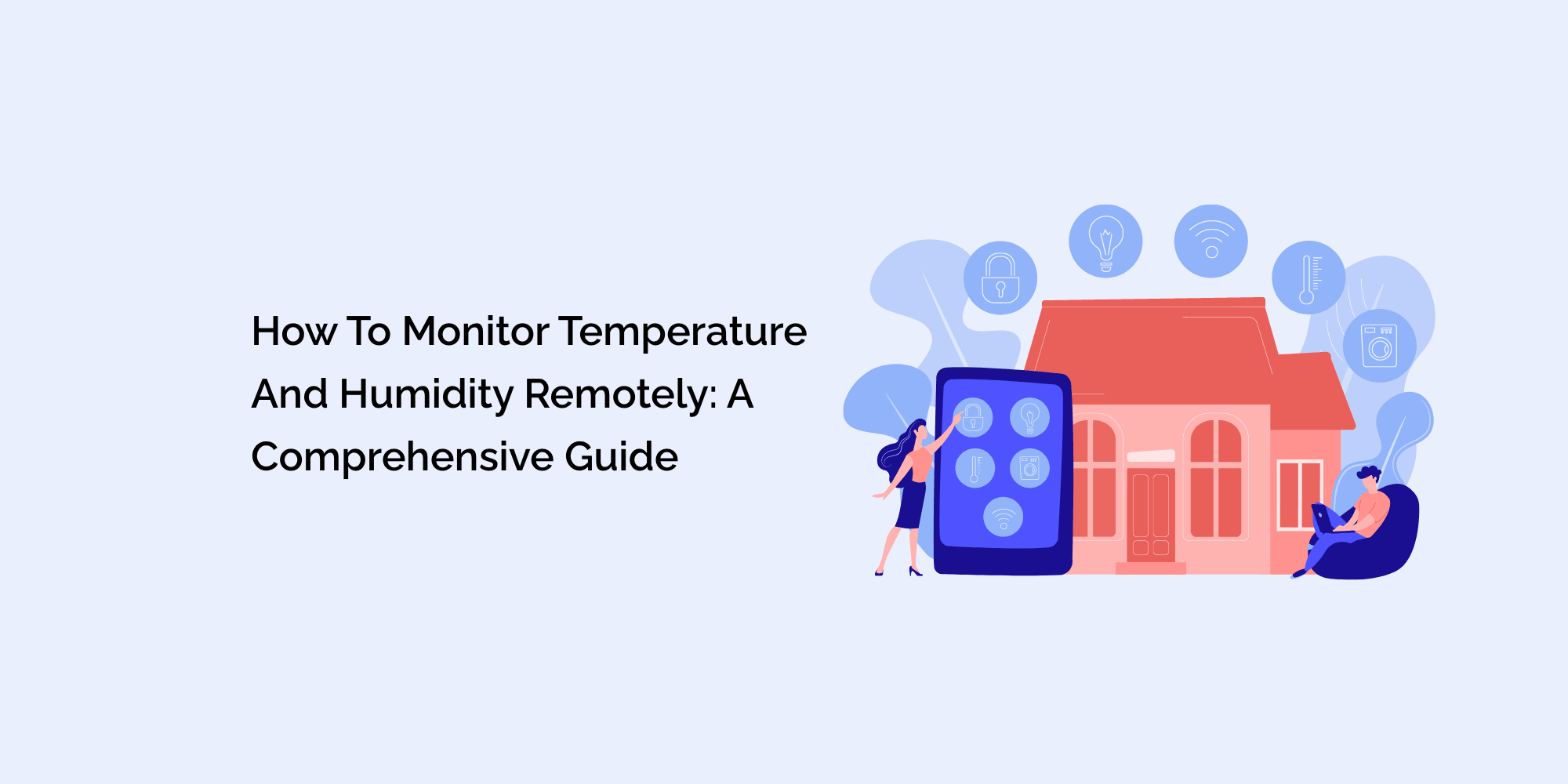Monitoring temperature and humidity is crucial in various industries and environments, ranging from homes and offices to warehouses, laboratories, and manufacturing facilities. With the advancement of technology, remote monitoring has become increasingly popular, allowing users to keep a close eye on temperature and humidity levels from anywhere, at any time.
In this comprehensive guide, we will explore the importance of remote temperature and humidity monitoring, discuss the benefits it offers, and provide a step-by-step process for setting up a reliable remote monitoring system. Whether you're a homeowner, a business owner, or a facility manager, this guide will equip you with the knowledge and tools to ensure optimal conditions and make informed decisions based on real-time data.
The Significance of Remote Temperature and Humidity Monitoring
Monitoring temperature and humidity is crucial for a variety of reasons. In this section, we will discuss the importance of maintaining optimal conditions in different environments, such as homes, businesses, and specialized industries. We will explore the potential risks associated with temperature and humidity fluctuations and highlight the need for continuous monitoring to prevent damage, ensure safety, and maintain quality.
The Benefits of Monitoring Temperature and Humidity Remotely
Remote monitoring offers numerous advantages over traditional monitoring methods. This section will delve into the benefits of remote monitoring, including real-time data access, improved efficiency, cost savings, scalability, and enhanced convenience. We will examine how remote monitoring empowers users to make data-driven decisions, detect anomalies, and take prompt corrective actions, regardless of their physical location.
Choosing the Right Remote Monitoring System
Selecting the appropriate remote monitoring system is crucial for achieving accurate and reliable data. We will discuss the factors to consider when choosing monitoring devices, such as sensor types, accuracy, connectivity options, and compatibility with existing infrastructure. Additionally, we will explore cloud-based solutions, data storage considerations, and the importance of security in remote monitoring systems.
Step-by-Step Guide to Setting Up a Remote Monitoring System
In this extensive section, we will provide a detailed roadmap for setting up a remote monitoring system. Starting with identifying monitoring needs and objectives, we will guide readers through the process of selecting suitable monitoring devices, determining data collection and storage methods, establishing communication and connectivity, implementing alerts and notifications, and testing and calibrating the system. Each step will be explained thoroughly, providing practical tips and insights.
Best Practices for Remote Temperature and Humidity Monitoring
To ensure the effectiveness of a remote monitoring system, certain best practices should be followed. This section will cover the importance of regular maintenance and calibration, data analysis and trend monitoring, as well as the integration of remote monitoring with other systems or processes. By implementing these best practices, users can maximize the benefits of remote temperature and humidity monitoring and ensure accurate and reliable data for informed decision-making.
Overcoming Challenges in Remote Monitoring
While remote temperature and humidity monitoring offer numerous advantages, there can be challenges to overcome. In this section, we will discuss common challenges such as connectivity issues, data security concerns, power supply considerations, and potential environmental factors that may impact the accuracy of monitoring devices. We will provide strategies and solutions to mitigate these challenges and ensure a robust remote monitoring system.
Future Trends in Remote Temperature and Humidity Monitoring
As technology continues to advance, remote monitoring systems are evolving rapidly. In this section, we will explore the future trends in remote temperature and humidity monitoring. This includes the integration of artificial intelligence and machine learning algorithms for predictive analysis, the rise of Internet of Things (IoT) devices for seamless connectivity, and the emergence of smart sensors and wearables. By understanding these trends, readers can stay ahead and leverage the latest advancements in remote monitoring technology.
Conclusion
In conclusion, remote temperature and humidity monitoring play a vital role in maintaining optimal conditions and ensuring the safety, efficiency, and quality of various environments. This comprehensive guide has provided insights into the significance of remote monitoring, the benefits it offers, and a step-by-step process for setting up a reliable system. By following best practices and staying updated on future trends, users can harness the power of remote monitoring to make informed decisions, prevent costly damages, and optimize their operations.
Monitoring temperature and humidity remotely is no longer a luxury but a necessity in today's fast-paced and interconnected world. With the right knowledge and tools at hand, anyone can establish a robust remote monitoring system and gain peace of mind knowing that they can monitor temperature and humidity levels from anywhere, at any time.
By prioritizing remote monitoring, individuals, businesses, and organizations can enhance efficiency, ensure compliance with regulations, and create a safer and more comfortable environment for everyone involved. Start implementing remote temperature and humidity monitoring today, and unlock the numerous benefits it has to offer.








